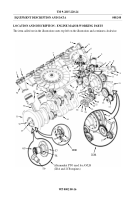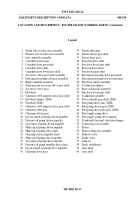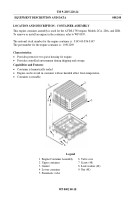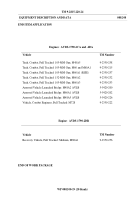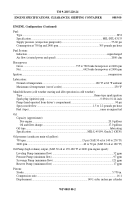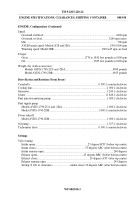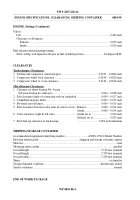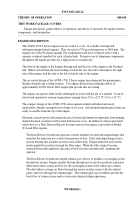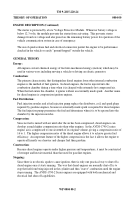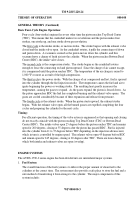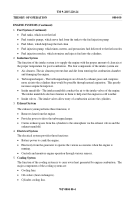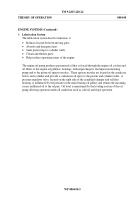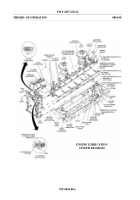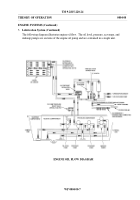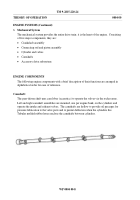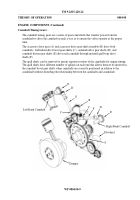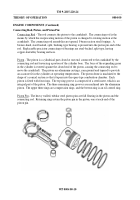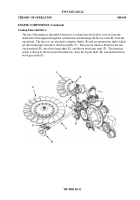TM-9-2815-220-24 - Page 64 of 1563
TM 9-2815-220-24
THEORY OF OPERATION
0004 00
ENGINE DESCRIPTION (Continued)
The starter is protected by a Low Voltage Protective Module.
Whenever battery voltage is
below 12.3 volts, the module prevents the starter from activating.
This prevents starter
damage from low voltage and also preserves the remaining battery power for operation of the
vehicle communication system in case of emergency.
The use of quick-release fuel and electrical connectors permit the engine to be performance
checked in the vehicle or easily "ground-hopped" outside the vehicle.
GENERAL THEORY
Energy:
All engines convert chemical energy of fuel into mechanical energy (motion) which may be
used in various ways including moving a vehicle or driving an electric generator.
Combustion:
The primary characteristic that distinguishes diesel engines from other internal combustion
engines is the method of fuel ignition.
In diesel engines, the fuel is injected into the
combustion chamber during a time when it is charged with extremely hot compressed air.
When the fuel enters the chamber, it ignites without an externally made spark.
Another name
for diesel engines is compression ignition engines.
Fuel Distribution:
Fuel injection nozzles and a fuel injection pump replace the distributor, coil, and spark plugs
required by gasoline engines, because no externally made spark is required for diesel engines.
The fuel injection pump pressurizes the fuel and determines when it is to be sprayed into the
chamber by the injection nozzles.
Compression:
Since no fuel is mixed with air until after the air has been compressed, diesel engines can
develop a much higher compression ratio than other engines.
In the AVDS-1790-2 series
engine, air is compressed to one-sixteenth of its original volume, giving a compression ratio of
16 to 1.
The higher compression ratio of the diesel engine allows it to achieve greater fuel
efficiency.
An important feature of the higher compression is the fact it allows the engine to
operate efficiently on a heavier and cheaper fuel than gasoline.
Construction:
Because diesel engines operate under higher pressure and temperatures, it must be constructed
of stronger and heavier material than that used for gasoline engines.
Stopping:
Since there is no electric spark to cause ignition, there is only one practical way to shut off a
diesel engine once it starts running.
The way that diesel engines are normally shut off is to
stop the fuel from being injected in the cylinder and thus "starve" combustion until the engine
stops running.
The AVDS-1790-2 Series engines are equipped with both mechanical and
electrical fuel shut-off capabilities.
WP 0004 00-2
Back to Top

